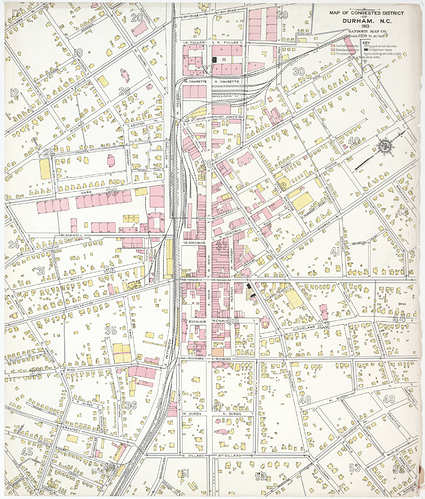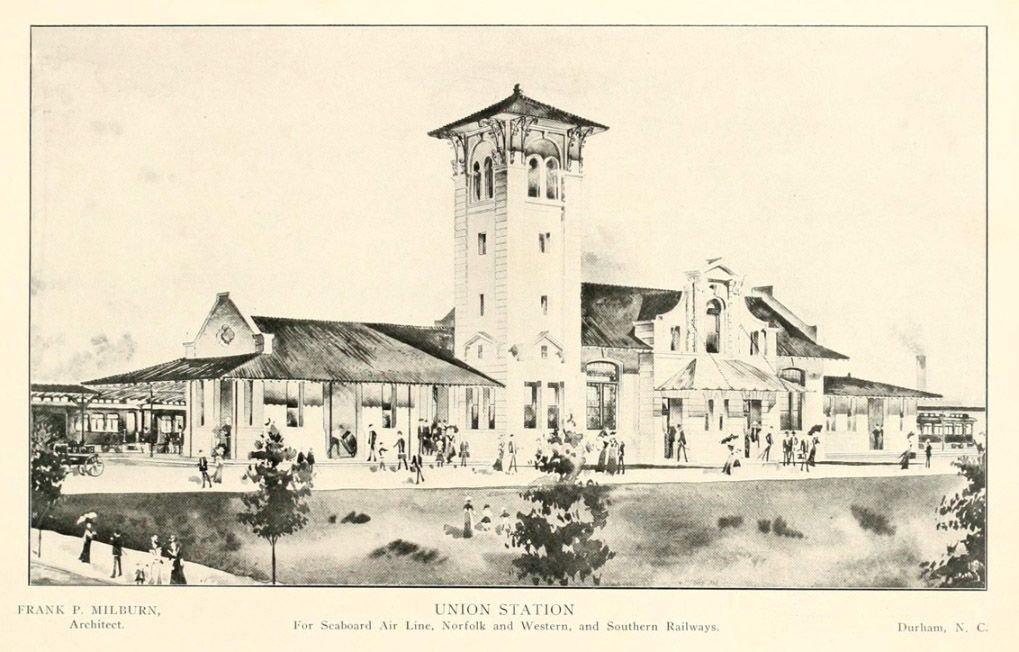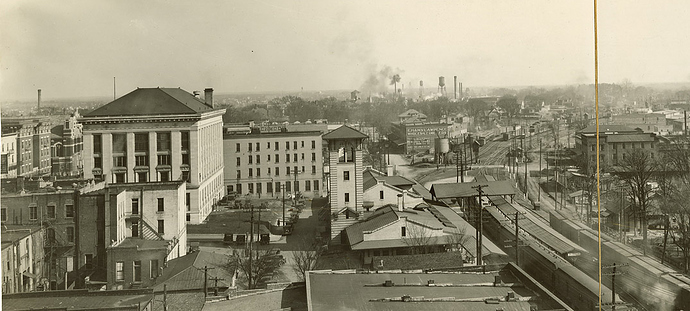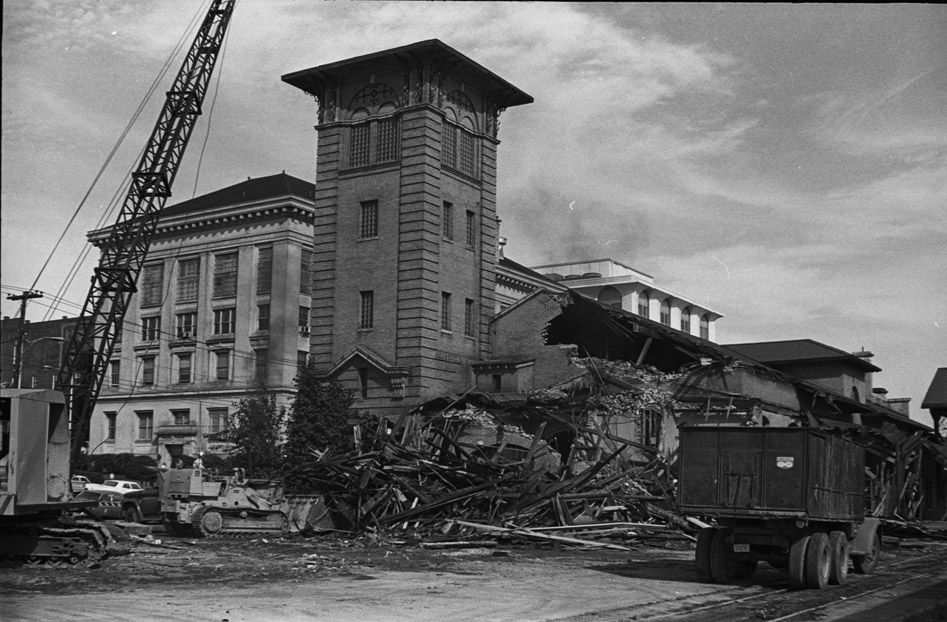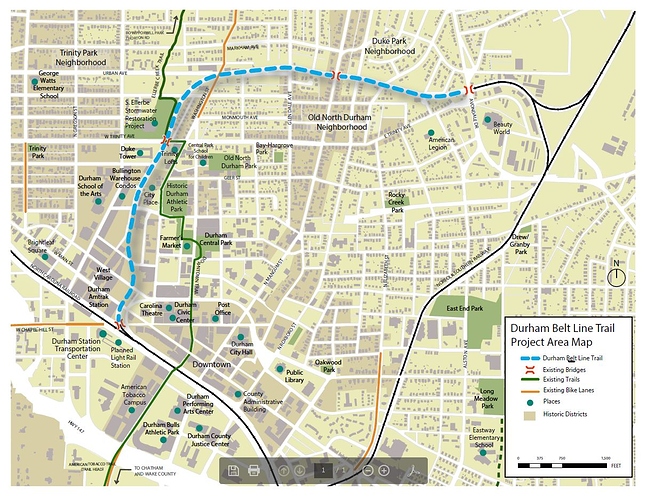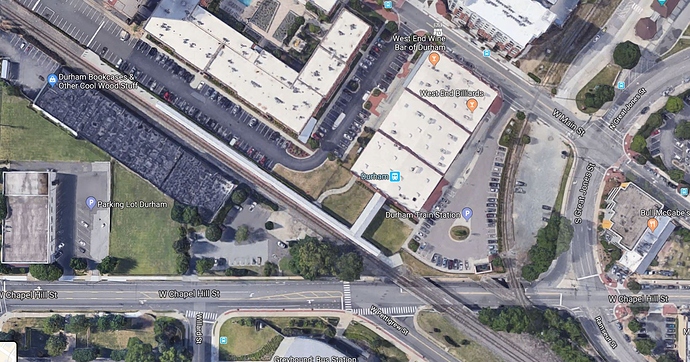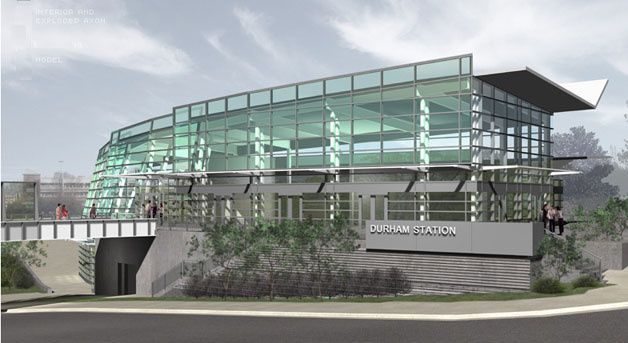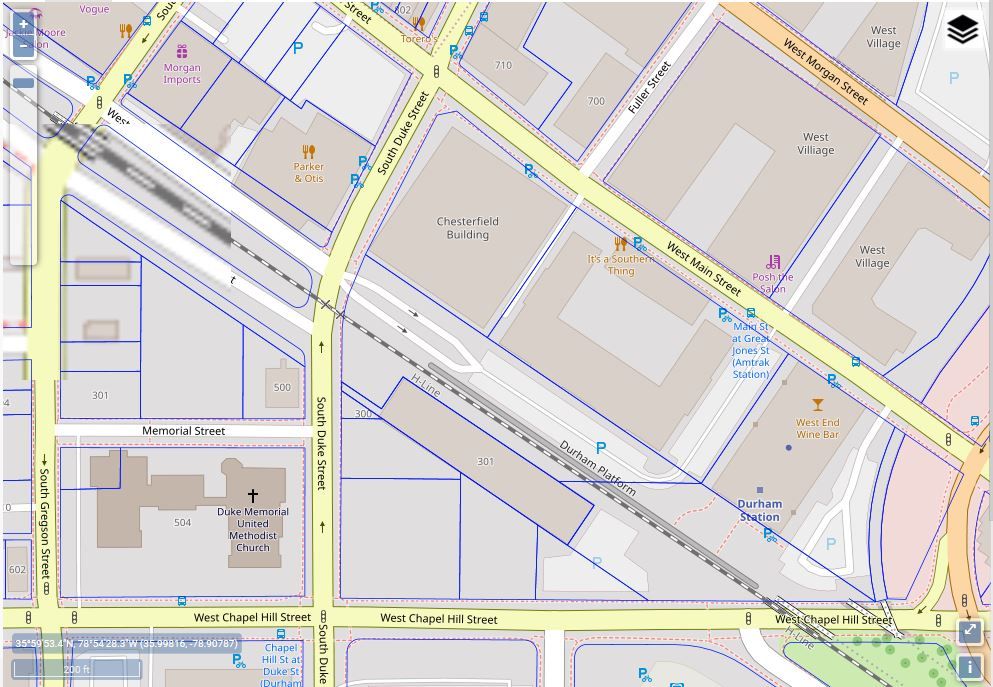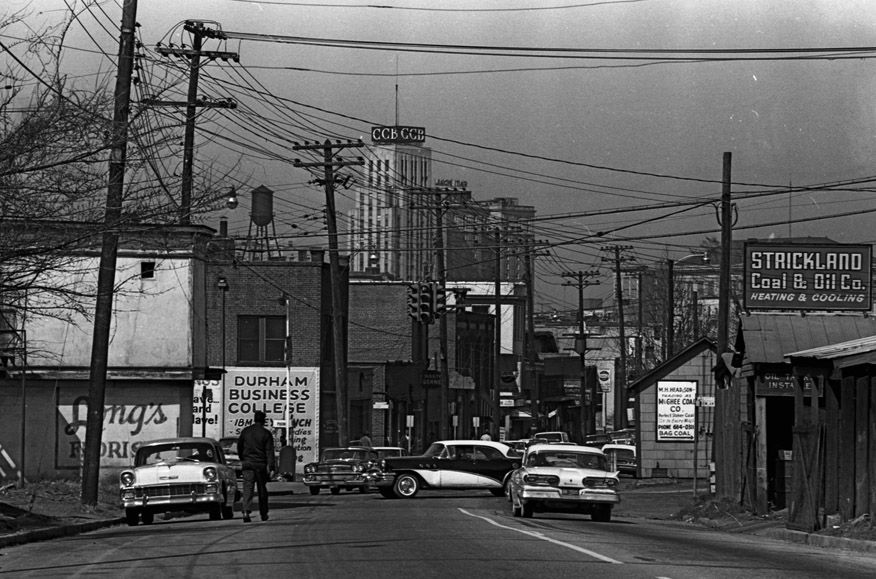@keita Oops. I think I might have been less than clear in my comment. It’s not Raleigh-based, but it has an impact on what we’re hoping to achieve.
As I have noted elsewhere. Durham had five different freight (and passenger) railroads converging on it because of the competition from the five major tobacco processing plants.
There is the NCRR from Goldsboro to Greensboro with operating license to the Richmond and Danville Railroad/Southern Railway/Norfolk Southern Railroad. The Southern Railway also had another route into Durham, the Oxford & Clarksville Division extending down from Keysville VA through Oxford to East Durham (which can be seen from I-85 heading north across Falls Lake). The Seaboard Air Line Railroad ran from Henderson to East Durham from Creedmoor terminating in downtown Durham. That line was largely abandoned when I-85 was built, and a middle segment was flooded with the creation of Falls Lake with a remnant left from Joyland Junction to East Durham running parallel to the SOU’s Oxford & Clarksville Division (two parallel railroad tracks seen over US 70).
The original Norfolk Southern Railway had a spur running into south Durham from the NSRy main line at Bonsal. The middle portion was flooded with the creation of Shearon Harris Reservoir. The northern segment is the American Tobacco Trail. The southern segment is operated as the New Hope Valley Railway. The Durham & Southern Railway came up from Dunn in to East Durham and sharing trackage rights into downtown Durham over the Seaboard Air Line. The fragment from East Durham to Apex still survives. The Norfolk & Western Railway came down to Durham from Lynchburg VA by way of Roxboro and Bahama making a belt loop around Durham.
Needless to say, it was a congested mess:
The creation of Durham Union Station in 1905 helped consolidate passenger operations of the major carriers, but each of the companies had their own freight facilities. (pretty picture time)
As with other cities dealing with the contraction and decreased influence of railroads, so too did Durham, tearing down Union Station in 1968.
A large portion of the area between Pettigrew and Peabody streets saw the tracks abandoned and the Durham Loop was created in their place. As you noted earlier, this coincided with the construction of NC-147 and the destruction of the Hayti neighborhood. Hickstown was preserved, but relocated.
Amtrak’s intercity passenger operations were moved to the Walker Warehouse in 2009. But, it is constrained by the fact that it is in a single-track segment of the NCRR with no room for double-tracking or creation of a house track. That’s going to be a problem with the increased traffic which will be generated by the commuter operations from Garner to West Durham. And, it’s going to be even more tricky as the NCRR and NCDOT start moving their corridor sealing to Durham County.
There are at least 13 grade crossings on the NCRR in Durham County. Two of which, Mangum Street and Blackwell/Corcoran, were many parts of the failure of the DOLR project.
Thinking big picture, my thoughts were to depress Mangum, Blackwell/Corcoran, and Pettigrew as a rebuilding project of the Durham Loop and eliminating those conflicts. Then, one could build over that traffic trench with tracks and a new Durham Union Station at Mangum and Pettigrew. Big $$, I know. But, a good way to solve the many conflicts.
Back to the original confusion. The Durham Belt Line trail is being recycled from two segments of the N&W loop track.
As the middle portion of the original Norfolk & Western spur from Lynchburg was flooded with the creation of Hyco Lake and the building of Duke Energy’s Roxboro Steam Electric Plant, Norfolk Southern can’t reactivate that line. The Oxford & Clarksville SOU segment is largely abandoned with tracks still in place north of Oxford. I can see why NS conceded these resources to Durham. So, they will likely stay as a trail, once instituted.
